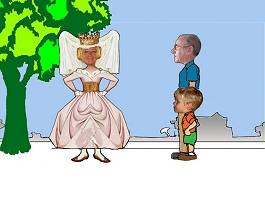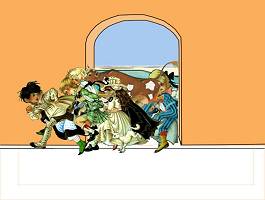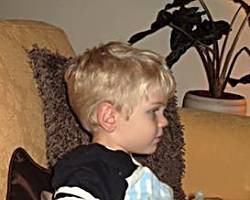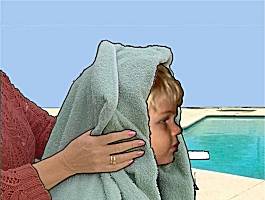
|
The world of non-commercial film and A-V |
Events Diary | Search | ||
| The Film and Video Institute | | ||||
The making of Hugo and the Runaway Stories
To BIAFF 2009 results | To Full Making Of Index
Hugo and the Runaway Stories by Norman Lilley got a 4-star award at BIAFF 2009.
I was pleasantly surprised ...
| It was very gratifying, firstly to get the Animation shield at the Surrey
Film Video Festival, and then to get a four-star rating at the BIAFF for
Hugo and the Runaway Stories, because it was only started as
a bit of fun to keep myself and my son, Chris, ticking along following the
‘heavy’ animation work on The Messenger, the last of our
‘Above & Beyond’ trilogy. (See Norman's account of making that
- here.)
Hugo is our grandson and when my wife, Sandra, and I were in Cyprus with him we tended to make up stories ‘on the hoof’, as it were. Walking among fallen olives, I kicked one along the ground and started a story about an olive who got fed up with just hanging around with all the others, and set off on his own – but he got so far that he was too exhausted to either go on or go back. Then I realised that Hugo was waiting to see what happened next and I had (untypically) gone blank, so I said to Sandra “What happened then, grandma?” |
 |
 |
Quick as a medium-paced flash, Sandra said “Er…well, the tree
snuggled into the ground and later grew up to be a big tree himself and made
plenty of olives for everybody”. Musing on this as a way to amuse Hugo
on film, the idea came to me that they would go and seek a story because
they had lost some from a book… and that was that.
A sort of rotoscopingThe technique was the one I always use now, a sort of ‘rotoscoping’ I suppose. Backgrounds usually start off with a photograph, but I ‘artwork’ them into what I want, usually putting a black line round the edge to give it a more ‘drawn’ look. Faces and moving bodies are usually sequenced, but not from moving footage but a series of poses by a helpful model. In Hugo’s case the pictures nearly all came first; the ones where he was ‘being silly’ and pulling faces often led to bending the story to fit the expressions. In the Hugo story in particular, I just used the photo heads of him, me and Sandra without treatment, as large heads on cartoon bodies – slapdash, really. |
 |
|
 |
I do the story and the artwork and Chris sticks them all together and makes them do what I want, and researches, creates and applies narration and sound effects, using Adobe Premiere. I have now sat for hours watching him do this, and I still have hardly a clue as to how he does it. I wrote the song, he played it and we both sang it. I should add that I lifted the 'runaway' characters from one of Hugo's storybooks so that he would recognise them - I adapted them but I did not create them myself.
When finished, I regarded it as a family and friends thing – sort of animated version of ‘baby on the lawn’ - of no interest to anyone who did not know Hugo and/or me. I was pleasantly surprised otherwise.
- Norman Lilley
Share your passions.

Share your stories.